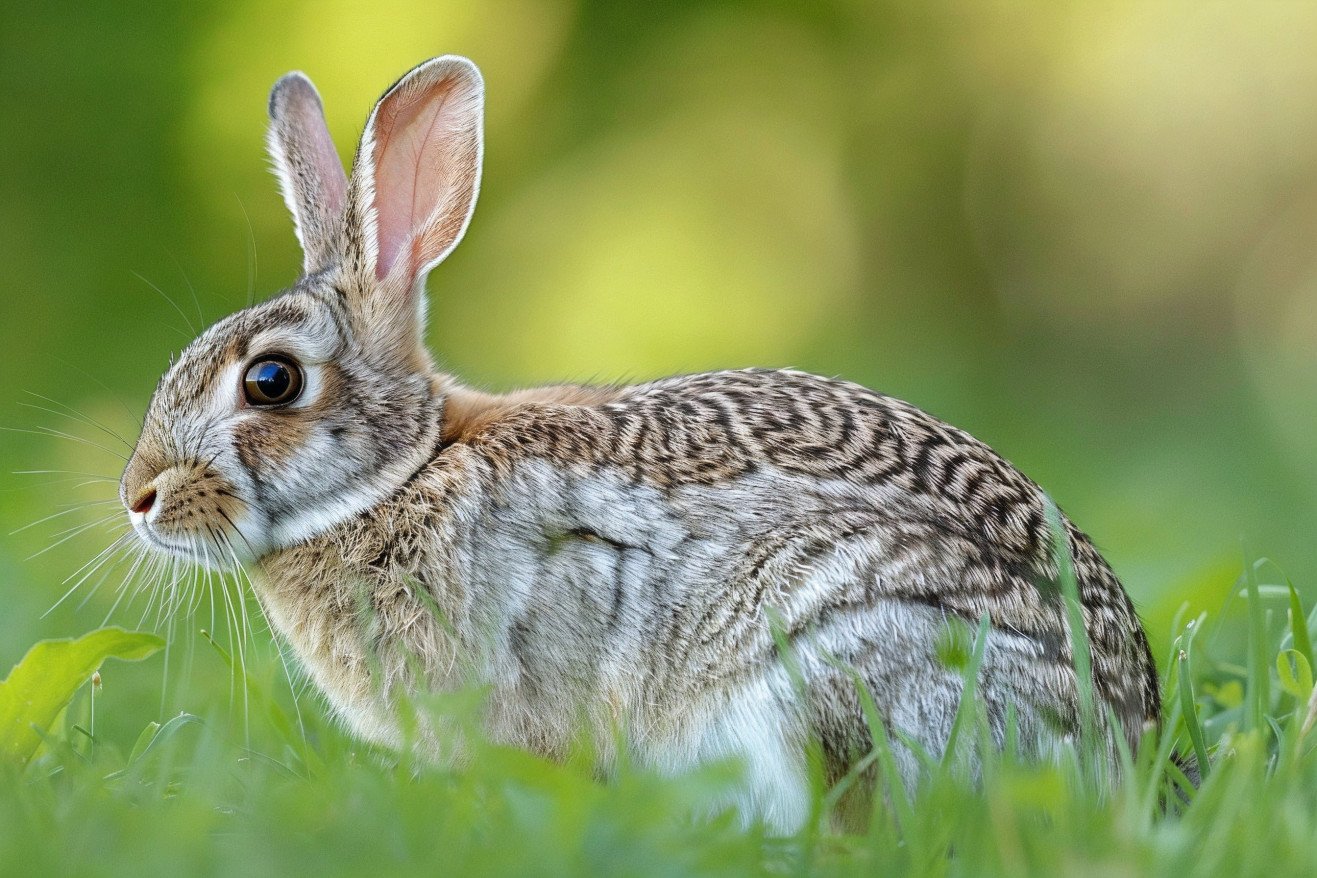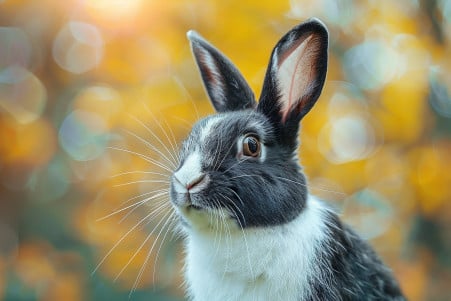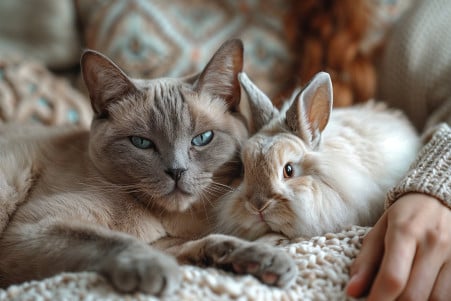Bunnies vs Rabbits: What's the Difference?
24 May 2024 • Updated 24 May 2024

On the surface, rabbits and bunnies may seem like the same thing, but there are actually a few important differences between the two—beyond just the name. In fact, rabbits are a larger category that includes both wild and domesticated animals, while bunnies are a specific type of rabbit, specifically domesticated rabbits, and more specifically, domesticated rabbits that are kept as pets.
Despite the fact that they have a lot in common biologically, there are some key differences in terms of personality and behavior that we'll cover below. Drawing on studies by zoologists, veterinarians, and other animal experts, we'll also look at the differences in terms of care needs and other things you should know if you're considering getting a pet rabbit or bunny.
What is the difference between bunnies and rabbits?
Physical Characteristics: How to Tell Bunnies and Rabbits Apart
Although bunnies and rabbits may look similar to the untrained eye, there are some physical differences that can help you tell them apart. For one, rabbits are generally smaller than their larger, longer-eared and longer-legged relatives, hares. It’s worth noting that some rabbit breeds have been bred to have large ears that hang down, which is known as lop ears.
Another difference is that bunnies (domesticated rabbits) are born hairless and blind, while wild rabbits and hares are born with fur and their eyes open after a longer gestation period of about 42 days, according to Britannica.
Rabbits also have shorter ears and legs than hares, which is an adaptation that helps them burrow and hide from predators. Meanwhile, hares’ larger bodies and longer legs help them run faster and escape predators in their open habitats.
One of the most fun things about bunnies and rabbits is that they come in a wide range of colors and patterns, from solid white to a mix of colors. This is largely due to humans’ selective breeding of domesticated rabbit breeds to achieve certain aesthetic characteristics.
Behavior and Habitat: Investigating the Lifestyles of Bunnies and Rabbits
Bunnies and domesticated rabbits are more social animals that live in groups, while wild rabbits and hares are more solitary. National Geographic states that baby hares, or leverets, are born fully furred with open eyes, whereas baby rabbits, or kittens or kits, are born hairless, blind, and helpless.
Wild rabbits and hares also have different nesting and burrowing behaviors. Britannica explains that rabbits dig complex underground burrows called warrens, while hares live in shallow depressions called forms above ground. This is an adaptation to the hares' need for speed and open environments, as they can run up to 45 mph, which is faster than rabbits, which can run up to 35 mph.
Bunnies and domesticated rabbits are more dependent on humans for food, shelter, and safety than their wild counterparts. Discover Wildlife adds that both bunnies and rabbits are crepuscular, meaning they are most active at dawn and dusk.
Cultural Significance: The Symbolic Roles of Rabbits and Bunnies
Rabbits and bunnies have played important cultural and symbolic roles in many different societies throughout history. In ancient Egypt, rabbits were considered lucky and were thought to bring good fortune. They were also associated with the moon, notes Ohio Thoughts.
The 'Three Hares' symbol, which shows three hares chasing each other in a circle, can be found all over Europe and Asia and has been associated with various concepts including fertility, the phases of the moon, and the Christian Trinity, according to the Palos Verdes Pulse. Rabbits and hares were also connected to the goddess Eostre, whose springtime festivals and customs were absorbed into the Christian celebration of Easter, including the Easter bunny, reports Time.
In modern literature and culture, rabbits and bunnies have come to symbolize everything from feminine creativity to survival and resistance, according to Literary Hub. Their connection to fertility and rebirth has helped ensure their continued relevance even as their meaning has changed over time.
Rabbit Care: How to House, Feed, and Keep Your Pet Healthy
Rabbits need a safe, comfortable, and stimulating environment to stay healthy and happy. The Beginner's Guide to Pet Rabbit Care from VetCare Pet Hospital explains that rabbits need a large, well-ventilated living space that includes separate areas for sleeping, eating, and exercise. The rabbit housing standards set by Rabbit Awareness Week suggest a minimum hutch size of 3m x 2m x 1m high for two rabbits that are bonded.
Rabbits should eat a diet that is made up mostly of fresh hay, which is nutritious and helps keep their teeth from getting too long, says the Animal Humane Society. They should also eat leafy greens, a limited amount of fruits and vegetables, and a small number of rabbit pellets, according to the ASPCA's rabbit care standards.
Rabbits are susceptible to a number of health problems, including dental disease, gastrointestinal stasis, uterine cancer, and respiratory infections, according to PetMD. Rabbits should be spayed or neutered to prevent reproductive cancers and behavioral problems, notes the House Rabbit Society.
Rabbits need regular grooming, gentle care, and routine veterinary care to stay healthy and happy, according to the RSPCA and My House Rabbit. With the right care and living conditions, rabbit owners can help their pets live their best lives.
Conclusion: Embracing the Unique Qualities of Bunny Companions
Although bunnies and rabbits share many similarities, there are several physical, behavioral, and cultural differences between the two. Understanding these differences is important for providing proper care and meeting the unique needs of bunny companions. While bunnies may require more care and attention than rabbits, their sweet dispositions and meaningful symbolism make them wonderful pets.
By understanding their natural behaviors and providing an appropriate environment, bunny owners can experience the love and companionship of these special animals. Whether you're an experienced bunny lover or thinking about bringing a bunny into your life, understanding the differences that make them unique is key to a rewarding relationship.


